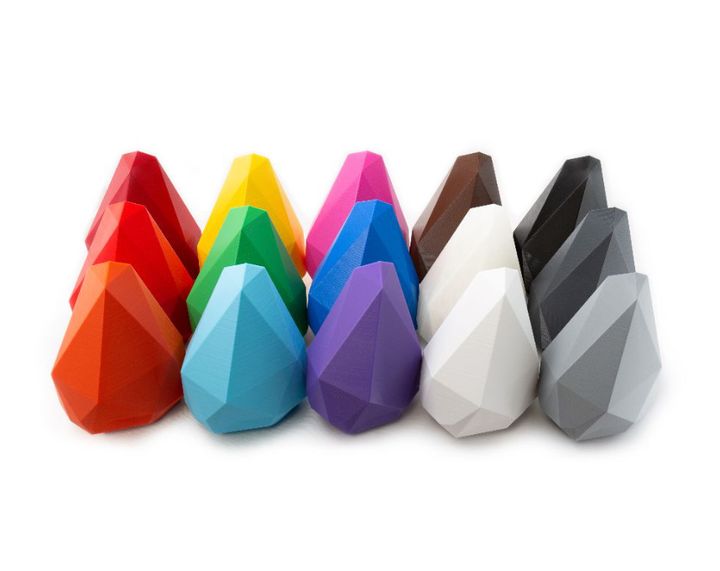
I just read a press release from Mosaic Manufacturing announcing a new product: filaments!
The Ontario-based company is known for their flagship product, the Palette. It’s a very unusual 3D printing accessory that can transform a normal, single extruder device into a multicolor 3D printer with ease.
How does it do that? Their software analyzes the slices to identify where color changes would be required, and then the Palette device literally cuts and splices the appropriate colors together in appropriate lengths. Then the 3D printer merrily proceeds as if it was a monocular 3D print. But unknown to the dumb device, the colors emerge from the nozzle just at the right time to effect the desired color changes.
It’s a fascinating approach that has proved quite successful. Since the introduction of their original product, the company has gradually improved the design and now offers the Palette 2S and Palette 2S Pro. These devices are able to accept up to four input filament colors and produce a printable spliced filament.
But now they offer something more: materials!
In their announcement, they say:
“Ever since we first launched Palette, we have been focused on creating ways to give you the best multi-material printing experience possible. While a big part of this experience is the hardware and software, another crucial part of this printing experience is the material.
This focus and strive for constant improvement is what has led to today’s release of Mosaic PLA Filament.
We couldn’t be more excited to introduce 15 different colors of 1.75mm PLA Filament!”
At first glance I thought they were announcing some kind of “Super Palette” that accepted FIFTEEN filaments, but that’s not the case. Instead they now have an entirely new product line of materials, with 15 color options.
The colors offered include: White, Black, Dark Gray, Gray, Brown, Dark Red, Red, Orange, Yellow, Green, Light Blue, Blue, Purple, and Magenta. (These colors, as Mosaic Manufacturing laid them out by name, add up to 14; from the image of their options, it seems there’s an off-white/light grey/cream 15th.)
While this is surely a relatively easy way for the company to add some revenue, I think there’s a bit more to the story here.
By organizing their own materials, they now have a kind of baseline from which they can tune the Palette.
They now know that anyone buying their PLA will have a predictable chemistry, and this should allow them to refine their print profiles to optimum levels. In other words, it’s likely that in the future Palette users could expect better output if using Mosaic Manufacturing materials, at least from out-of-the-box with default settings.
For now, it is a good offering for Palette users as it’s a good set of colors for anyone producing multicolor objects and has an easy path to obtain them.
But in the future, I’m wondering how Mosaic Manufacturing can leverage this combination of products in an even more powerful way.
